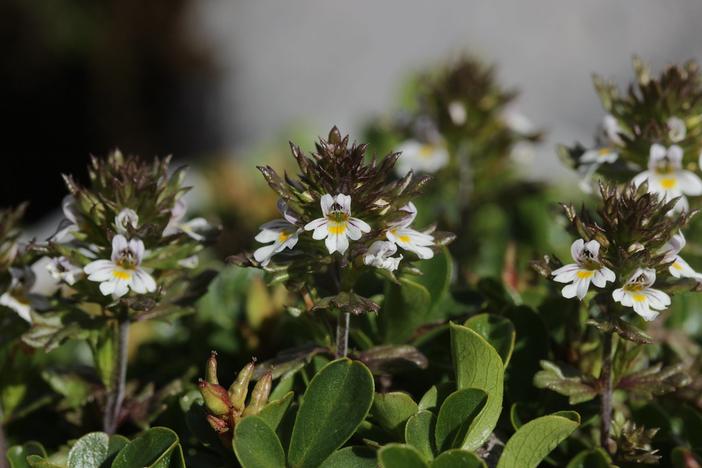Meadow Eyebright
(Euphrasia officinalis subsp. pratensis)
Meadow Eyebright (Euphrasia officinalis subsp. pratensis)
/
/

Björn S...
CC BY-SA 2.0
Image By:
Björn S...
Recorded By:
Copyright:
CC BY-SA 2.0
Copyright Notice:
Photo by: Björn S... | License Type: CC BY-SA 2.0 | License URL: https://creativecommons.org/licenses/by-sa/2.0/ | Uploader: Björn S... | Publisher: Flickr










Estimated Native Range
Summary
Euphrasia officinalis subsp. pratensis, commonly known as Meadow Eyebright, Eyebright, Large-Flowered Sticky Eyebright, or Common Eyebright, is an annual herb native to grasslands, meadows, and pastures across Europe. It typically grows to a height of 0.1-1 feet (0.03-0.3 meters) and features small, lanceolate leaves. The flowers are white or purple with yellow variegations and a prominent lower lip, blooming from late spring to early autumn. The flowers are modest in size but can be quite showy due to their abundance and attractive coloration.
Meadow Eyebright is valued for its traditional use in herbal medicine, particularly for eye-related conditions, hence the name "Eyebright." It is also appreciated for its delicate flowers and ability to attract pollinators such as bees. In cultivation, it prefers full sun to part shade and thrives in a range of soil types, including clay, loam, and sandy soils, provided they have medium drainage. While it requires medium amounts of water, it can tolerate periods of dryness once established. Meadow Eyebright is not commonly used in large-scale horticulture but can be found in wildflower mixes and naturalistic plantings. It is relatively low-maintenance but can be susceptible to powdery mildew and rust.CC BY-SA 4.0
Meadow Eyebright is valued for its traditional use in herbal medicine, particularly for eye-related conditions, hence the name "Eyebright." It is also appreciated for its delicate flowers and ability to attract pollinators such as bees. In cultivation, it prefers full sun to part shade and thrives in a range of soil types, including clay, loam, and sandy soils, provided they have medium drainage. While it requires medium amounts of water, it can tolerate periods of dryness once established. Meadow Eyebright is not commonly used in large-scale horticulture but can be found in wildflower mixes and naturalistic plantings. It is relatively low-maintenance but can be susceptible to powdery mildew and rust.CC BY-SA 4.0
Plant Description
- Plant Type: Herb
- Height: 0.1-1 feet
- Width: 0.5-1 feet
- Growth Rate: Moderate
- Flower Color: White, Purple
- Flowering Season: Summer, Fall
- Leaf Retention:
Growth Requirements
- Sun: Full Sun, Part Shade
- Water: Medium
- Drainage: Medium
Common Uses
Bee Garden, Low Maintenance
Natural Habitat
native to grasslands, meadows, and pastures across Europe
Other Names
Common Names: Meadow Eyebright, Eyebright, Large-Flowered Sticky Eyebright, Common Eyebright
Scientific Names: , Euphrasia officinalis subsp. pratensis, Bartsia imbricata, Euphrasia agrestis, Euphrasia cantalensis, Euphrasia capitulata, Euphrasia carniolica, Euphrasia cuprea, Euphrasia cuspidata, Euphrasia cuspidatissima
GBIF Accepted Name: